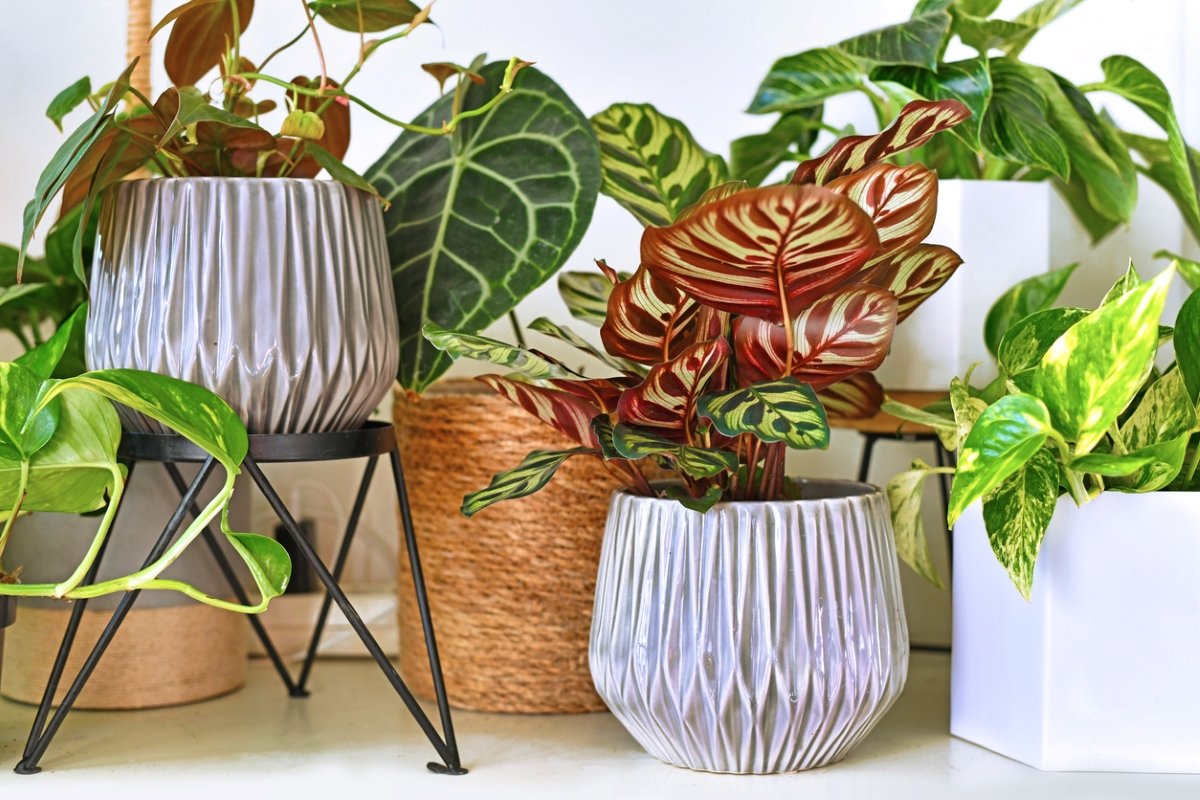

We may earn revenue from the products available on this page and participate in affiliate programs. Learn More ›
Cultivating houseplants can be a rewarding hobby. Plants have proven health benefits, including air purification, stress relief, and even aiding with sleep. However, for plant lovers who already have every garden variety of pothos and philodendron filling their home’s shelves and are looking for just the plant to spice things up visually, they’ll be hard-pressed to find any varieties more appealing than indoor variegated plants, some of which are the best houseplants around.
What Are Variegated Plants?
First, though, what does “variegated” mean when it comes to houseplants? Variegated plants feature varied or multicolor leaves, often showing one solid color, such as green, plus another “accent” color. These color combos can include contrasting shades of green, such as emerald and lime, as well as yellow, pink, red, purple, and white in patterns that range from random sections to stripes, blotches, spots, and borders.
While variegated plants often only feature two colors, some can show three or more colors on the same leaf. Colors and patterns on a plant with variegated leaves can also change depending on light exposure and the time of year.
RELATED: These Are the Most Popular Houseplants in America
What Causes Variegation?
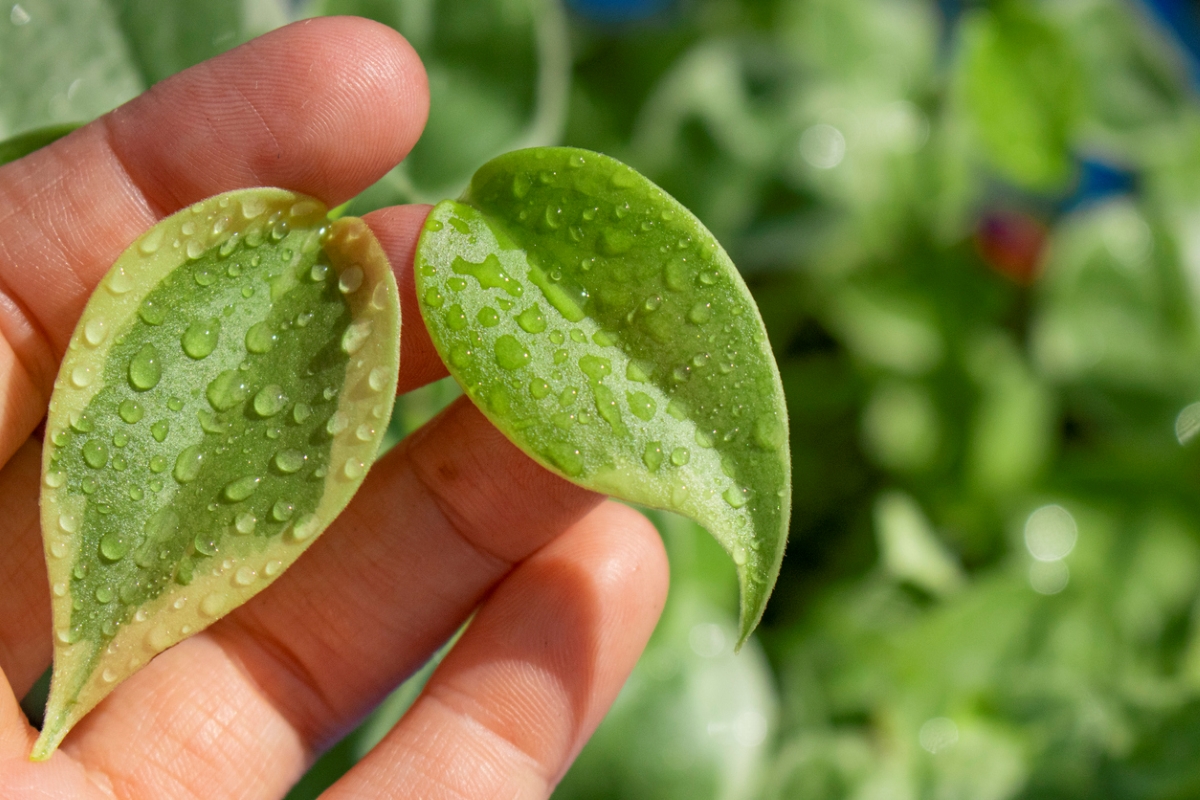
The wide variation in the color of plant leaves occurs due to a lack of chlorophyll in some of the plant’s cells. Chlorophyll contains the pigment that gives plants their green color. There are three main causes for chlorophyll deficiency: genetic mutation, viral infection, and natural variegation.
Genetic mutation: Cell mutation can occur as a genetic mutation or as a random mutation, known as a chimeric gene. Genetic mutations indicate that a plant’s color is stable and that its offshoots will also carry this genetic mutation, whether that is a solid color like red or purple, or a variegation.
A chimeric mutation is unstable, which means that if a new plant is propagated from a variegated one, only cuttings from variegated shoots will carry the new trait. Otherwise, new plants will not feature the variegation.
Viral infection: Although a fairly rare form of variegation, it is possible for plants to have discolored leaves or veins as the result of a viral infection. Like a genetic mutation, this is considered a stable variegation.
Natural variegation: Some plants produce variegated leaf colors because of a pattern-gene present in the plant’s DNA. This can be a result of years of adaptation to survive in the wild. In some cases, variegation gives plants an advantage over other green varieties.
Why Plants Lose Their Variegation
A variegated plant that has a stable, genetic mutation will continue to produce offshoots of plants that also display this genetic mutation. Sometimes, especially among fast-growing houseplants, they may revert to a solid color. This is often caused by insufficient light.
Variegated plants with an unstable mutation will eventually revert back to solid-green plants. This is a technique some plants rely on to get enough chlorophyll to survive. Unstable mutations are generally less common because a lack of chlorophyll lowers a plant’s chance for survival in nature.
Tips for Caring for Variegated Plants
Many indoor variegated plants come from tropical environments, so they’re often grown in greenhouses where temperature and humidity are maintained at an optimum level. If having an indoor grow house isn’t desirable or feasible, though, there are several ways to give your variegated houseplants the right amounts of light and humidity.
- For plants in a room lacking the bright, indirect light many houseplants love (as well during winter), consider supplementing that light with grow lights. A lack of light can cause a plant’s variegation to fade as it tries to produce more chlorophyll-absorbing cells.
- Keep a hand mister around to regularly spray plants or add a humidifier to the room.
- Note that many indoor variegated plants are sensitive to direct sunlight. Provide bright, indirect light for most houseplants, unless a specific plant needs more or less light.
- Remove solid-green offshoots to maintain the variegation: once the plant produces fully green foliage, it will continue to do so in an attempt to get as much energy as it can.
- Pair interesting variegated plants with indoor flowering houseplants such as orchids for a beautiful tropical vibe.
1. Variegated String of Hearts (Ceropegia woodii)
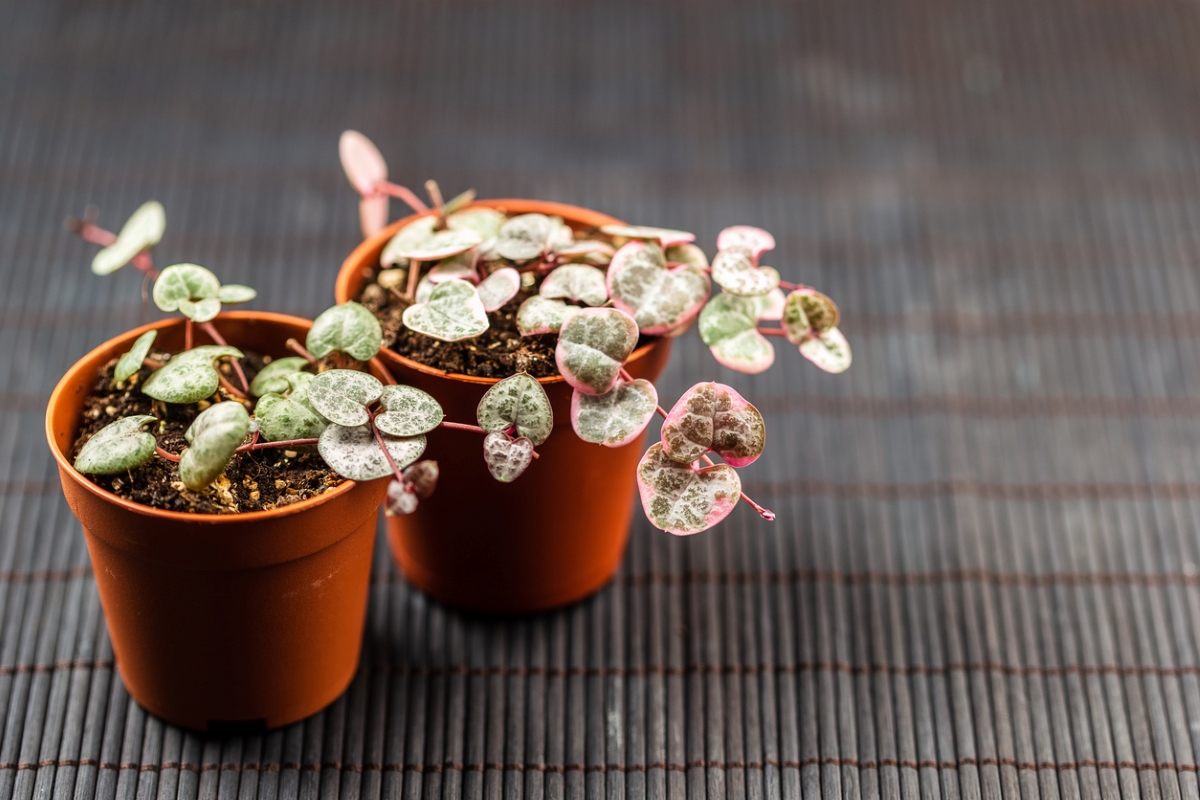
Sometimes called the rosary vine, this plant gets its name from tiny heart-shaped leaves that appear spaced out along the vines. It’s semi-succulent, so it’s best to let it dry out completely between waterings. The variegated leaves are pale green with silvery veins and edges tinged pink or even purple. It also blooms (mosty in summer and fall) with interesting, upright, tubular pink flowers. Give it bright indirect light.
2. Snake Plant (Dracaena trifasciata)
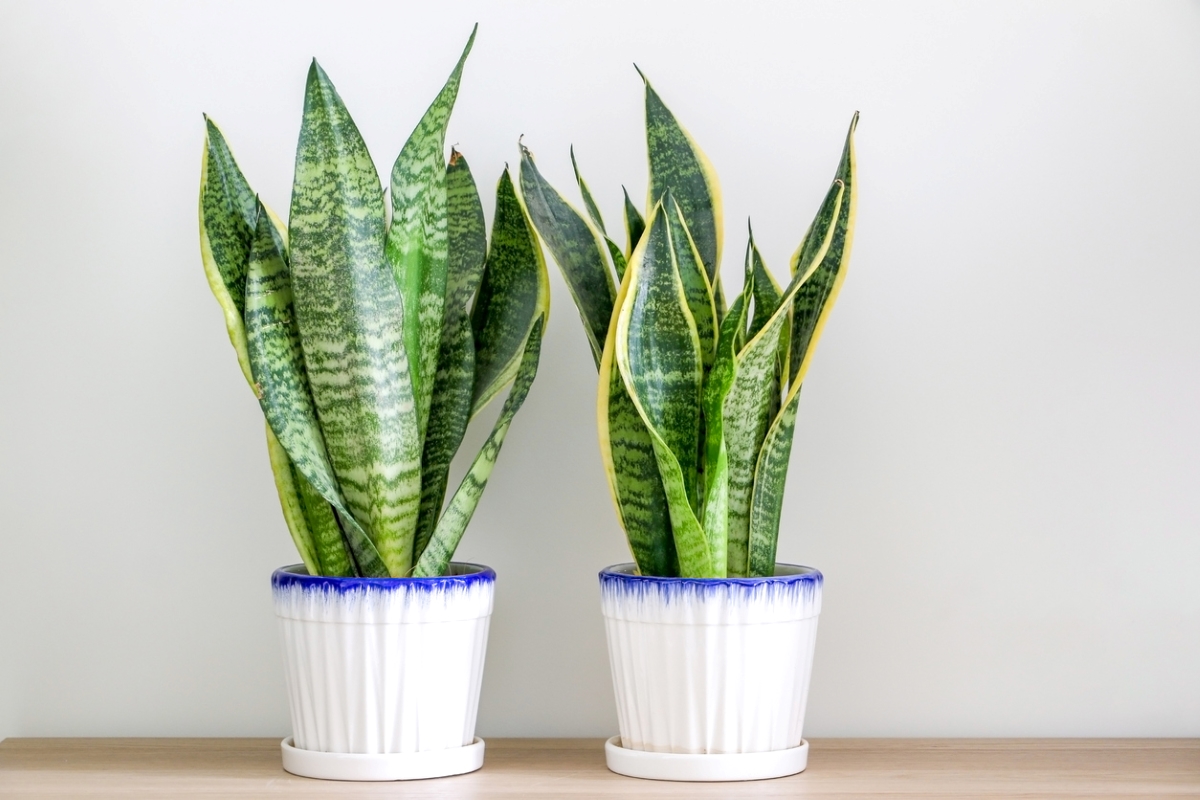
Quite possibly one of the easiest, most forgiving houseplants, all varieties of snake plants are low maintenance and can tolerate medium to low light as well as infrequent waterings. This variety sports deep green leaves striped with yellow edges. If a snake plant is listed for purchase as Sansevieria trifasciata, it is one and the same; this plant was classified as such until very recently.
3. Red Congo Philodendron (Philodendron ‘Congo Rojo’)
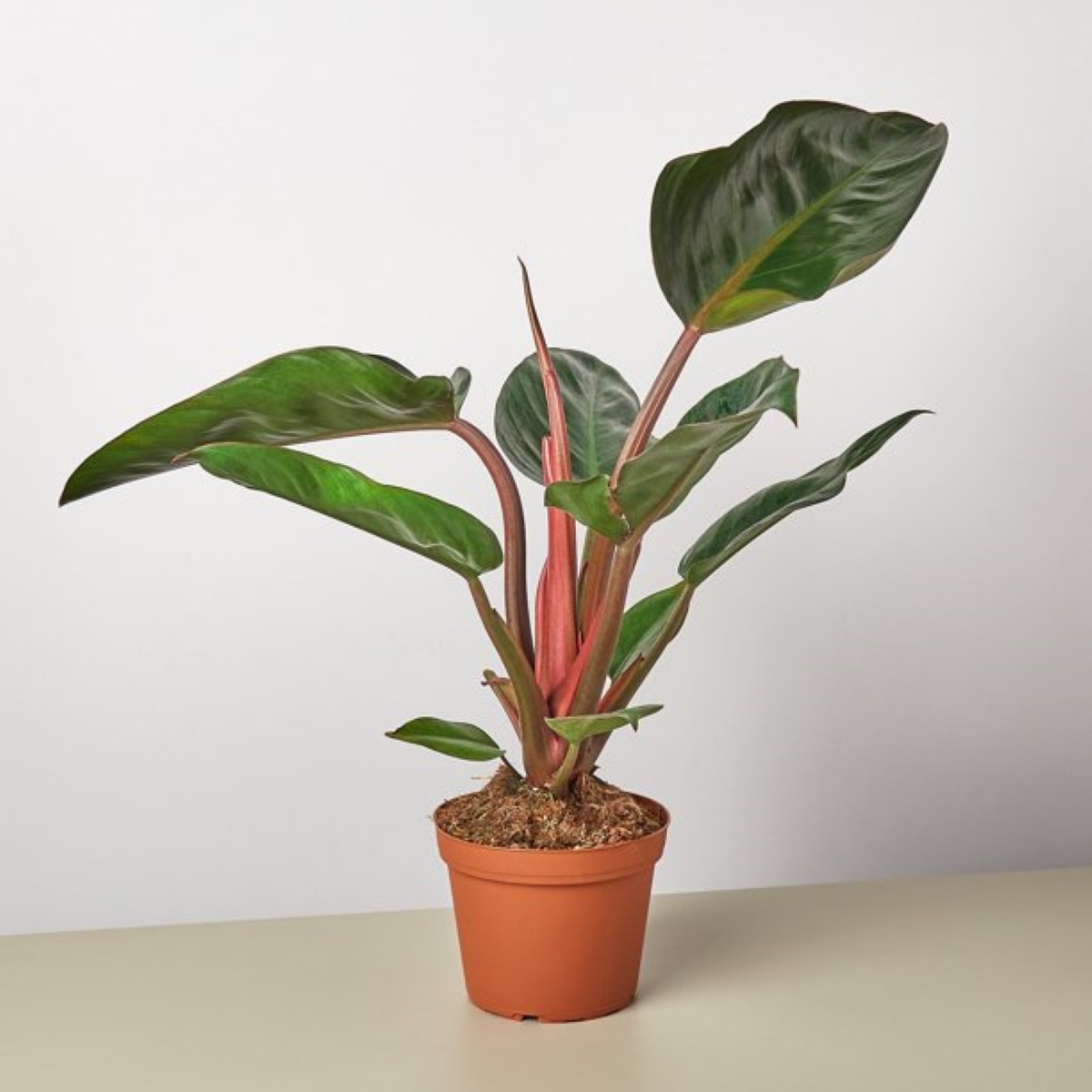
A true centerpiece of any room, the Red Congo Philodendron features long green leaves that can be variegated with deep emeralds, contrasting with shades of white, pink, and even reddish-orange. The stems of this philodendron variety are a deep red color. The plants prefer bright light and even a little morning sunlight, regular water, and consistent humidity.
4. Variegated Monstera (Monstera deliciosa)
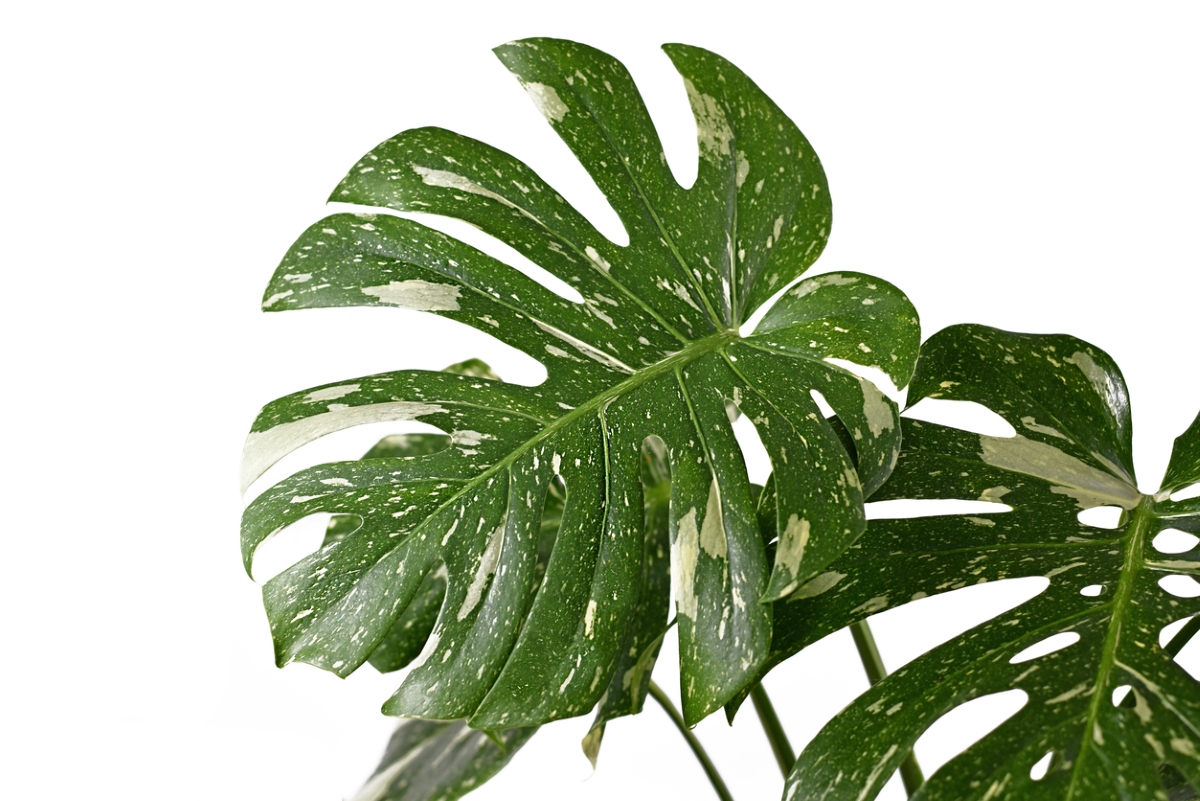
A number of species of monsteras have variegated leaves, usually in shades of green, white, and yellow. Monstera deliciosa ‘Thai Constellation’ is one of the most reliable, with white and pale yellow patterns on nearly every leaf. Aurea features similar patterns but with a brighter yellow. The true Monstera deliciosa ‘Variegata’ plant is the result of a genetic mutation and is rarely sold, since it can mutate back to a standard green monstera. All varieties love bright light, humidity, and warm indoor temperatures.
5. Prayer Plant (Maranta leuconeura)

One of the more unique houseplants, the Prayer Plant is named for the fact that the leaves curl up at night, as if in prayer. The consistent variegation of the leaves includes red veins against two-tone, velvety green leaves with a purple underside (visible when they curl up). It is semi-vining and makes a great hanging basket plant as it gets older. Give it indirect bright light, regular water, and plenty of humidity.
6. Watermelon Peperomia (Peperomia argyreia)
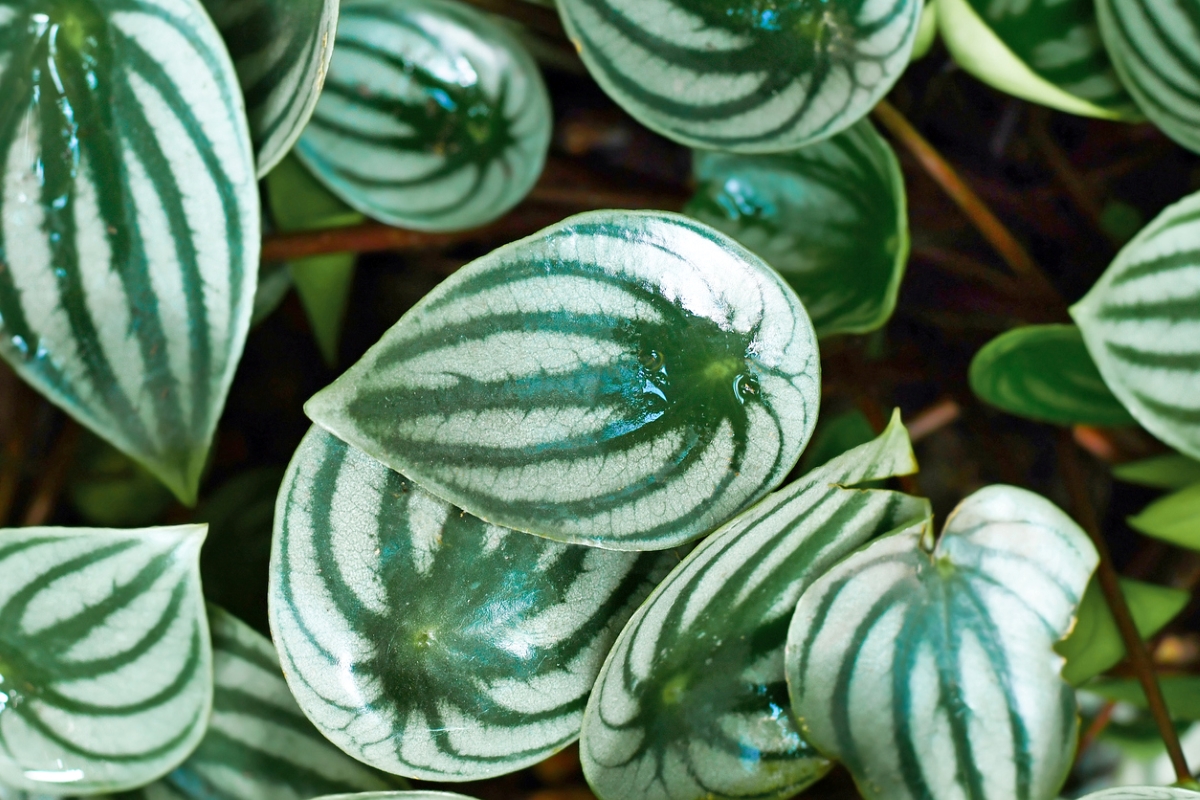
This cute little plant gets its name from the variegation of dark green lines against round, brighter green leaves, making it look a bit like a watermelon. Peperomias like medium light, regular water, and at least some humidity. A versatile variegated houseplant, it looks great in groupings with taller plants and seldom needs repotting since it likes being pot-bound.
7. Variegated String of Pearls (Curio rowleyanus f. variegatus)
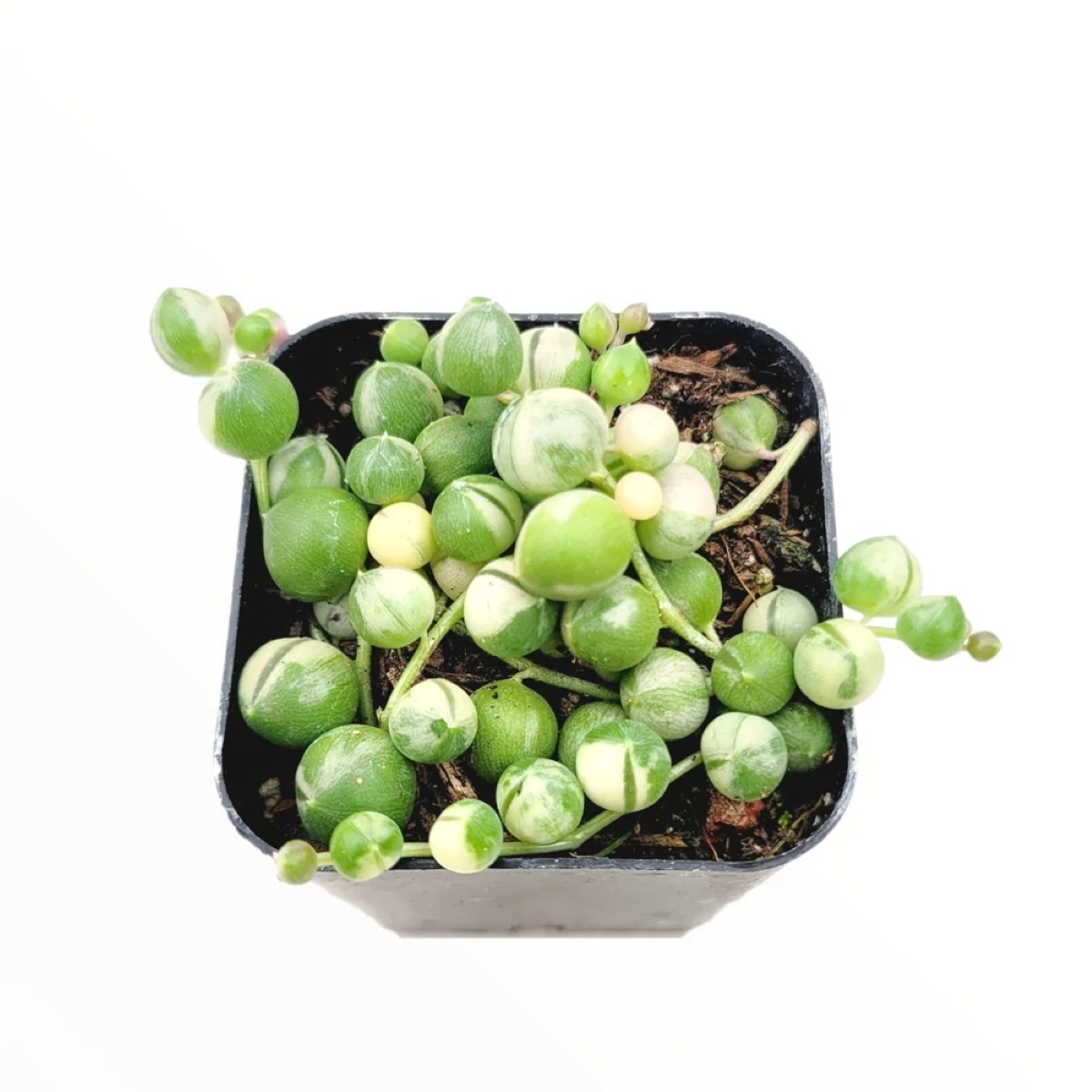
For the houseplant aficionado who has everything, this unique trailing plant is a bonus, but a little hard to come by. Further, no two are alike. Until recently, String of Pearls was named Senecio rowleyanus, and can appear for sale by either name. The tiny pea-sized pearls of the variegated type can have shades of purple and pink or swirls of white.
They need indirect light or early morning sun, and should be watered only when completely dry to the touch. Expect this String of Pearls to grow more slowly than its nonvariegated relatives.
8. Rattlesnake Plant (Goeppertia insignis)

Formerly known as a calathea and commonly referred to as a prayer plant because it raises and lowers its leaves from day to night, the Rattlesnake Plant is one of those truly unique plants that is actually fairly easy to care for. They have long, narrow lime-colored leaves splotched with deep green. Rattlesnake plants like bright light, regular water, and a little extra humidity.
9. Variegated English Ivy (Hedera helix ‘Variegata’)

Variegated English Ivy can grow outdoors in USDA Zones 4 to 10, but it is often kept as a houseplant. Popular around the holidays, the dark green leaves edged with white or yellow appear in nurseries as trailing plants for topiaries. English ivy can tolerate cooler indoor temperatures but will need regular misting to help prevent mites. Plants grown indoors don’t always survive outside in cold snaps, so choose an outdoor-grown variety for window boxes and stick to the hothouse variety for variegated indoor plants.
10. Variegated White Bird of Paradise (Strelitzia alba)
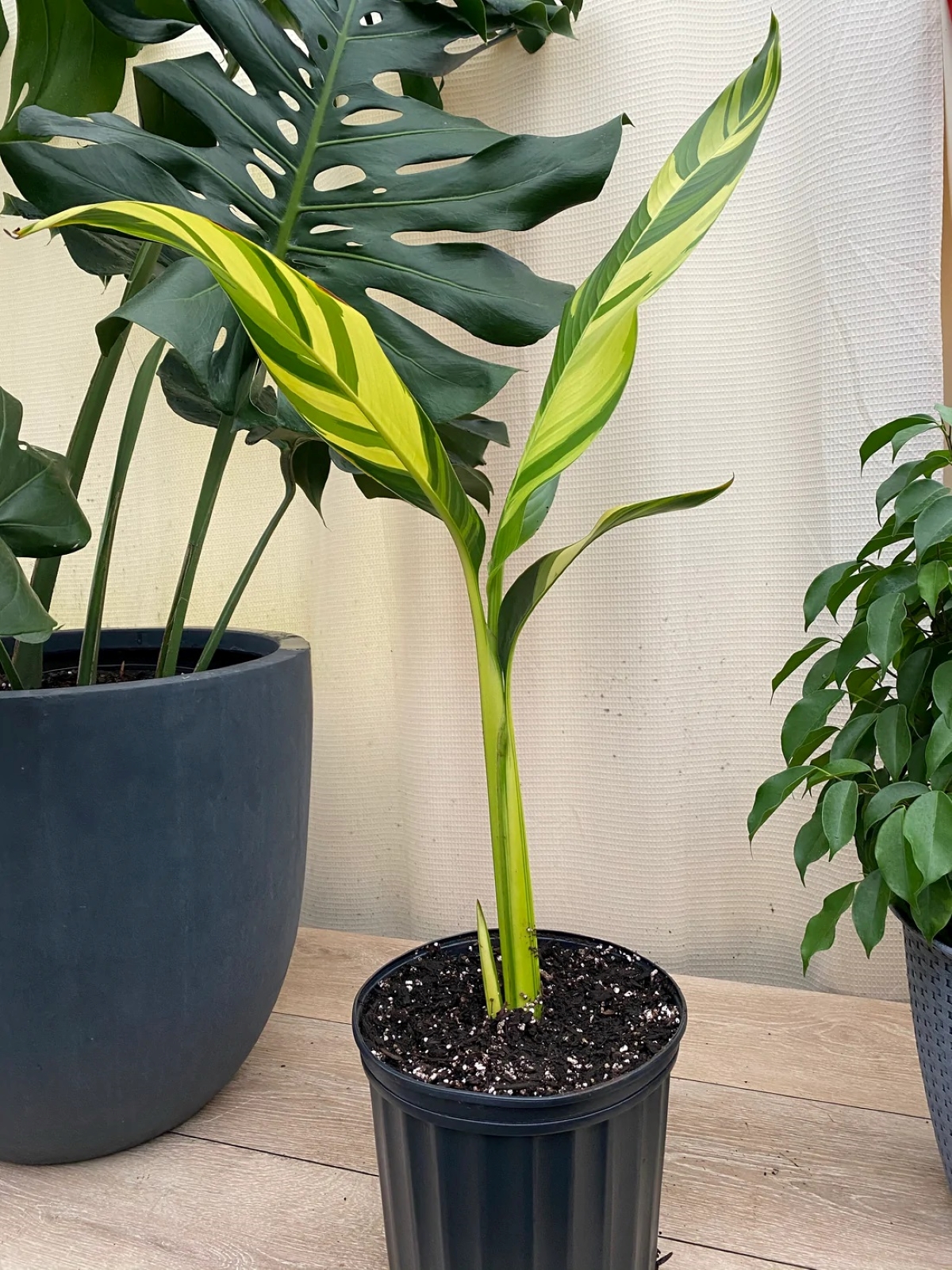
One of the rarest of the indoor plants with variegated leaves, this big houseplant develops random white or yellow variegation on the leaves. The plant makes a fantastic, showy houseplant and is as easy to care for as the nonvariegated variety. Give them bright light, plenty of room to grow, and keep the soil moist but not soggy. Mist the plants regularly, since they love humidity.
RELATED: Count On These 25 Indoor Plants for Easy Color Year-Round
